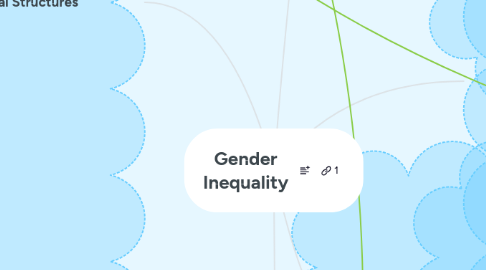
1. Ideological Structures
1.1. Discrimination
1.1.1. supply side
1.1.1.1. sex role socialization
1.1.1.1.1. England
1.1.1.2. status beliefs
1.1.1.2.1. Ridgeway
1.1.1.2.2. Correll
1.1.1.3. tokenism
1.1.1.3.1. Kanter
1.1.2. demand side
1.1.2.1. statistical discrimination
1.1.2.1.1. Bielby and Baron
1.1.2.2. status beliefs that devalue women
1.1.2.2.1. Ridgeway
1.1.2.2.2. West and Fenstermaker
1.1.2.2.3. Correll
1.1.2.3. devaluation of women's work
1.1.2.3.1. England
1.1.2.3.2. Ridgeway
1.1.2.3.3. Ehrenreich and Hoschild
1.1.2.4. glass ceiling
1.1.2.4.1. Ridgeway
1.1.2.5. glass escalator
1.1.2.5.1. Williams
1.1.2.5.2. Wingfield
1.1.2.6. motherhood penalty
1.1.2.6.1. Correll
1.2. Hierarchy and Power
1.2.1. hegemonic masculinity
1.2.1.1. Connell
1.2.1.2. Pascoe
1.2.2. patriarchy
1.2.2.1. Hartman
1.2.3. gender neutrality
1.2.3.1. Acker
1.2.4. social sanction
1.2.4.1. Pascoe
1.2.4.2. Schilt
1.2.4.3. W and F
1.2.5. heteronormativity
1.2.5.1. Ingraham
1.2.5.2. Schilt
1.2.6. essentialist versus constructionist
1.2.6.1. Acker
1.2.6.2. W and F
1.2.6.3. Ridgeway
1.2.6.4. Holland
1.2.6.5. Schilt
2. Work
2.1. occupational sex segregation
2.2. wage gap
2.2.1. Human capital
2.2.1.1. Becker
2.2.2. discrimination
2.2.2.1. England
2.2.2.2. Bielby and Baron
2.2.3. status beliefs
2.2.3.1. Ridgeway
3. Home
3.1. Child care
3.1.1. outsourcing
3.1.1.1. E and H
3.1.2. "heart transplant"
3.1.2.1. E and H
3.1.3. gendered role expectations
3.1.3.1. F and W
3.1.3.2. Ridgeway
3.1.3.3. Correll
3.2. Housework
3.2.1. outsourcing
3.2.1.1. E and H
3.2.2. gendered role expectations
3.2.2.1. F and W
3.2.2.2. Ridgeway
3.2.2.3. England
4. Representation
4.1. media
4.1.1. controlling images
